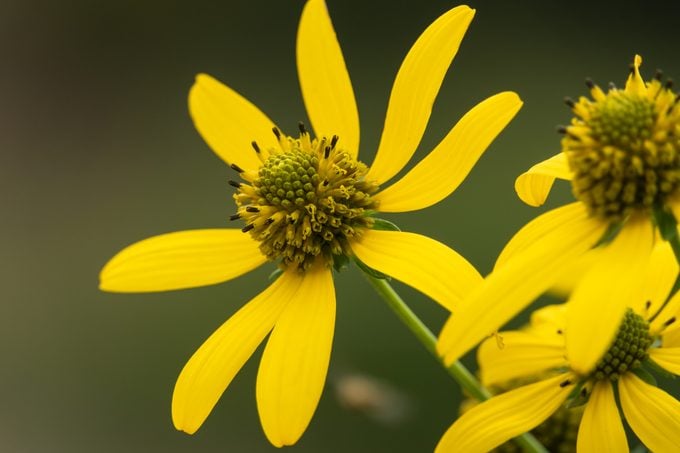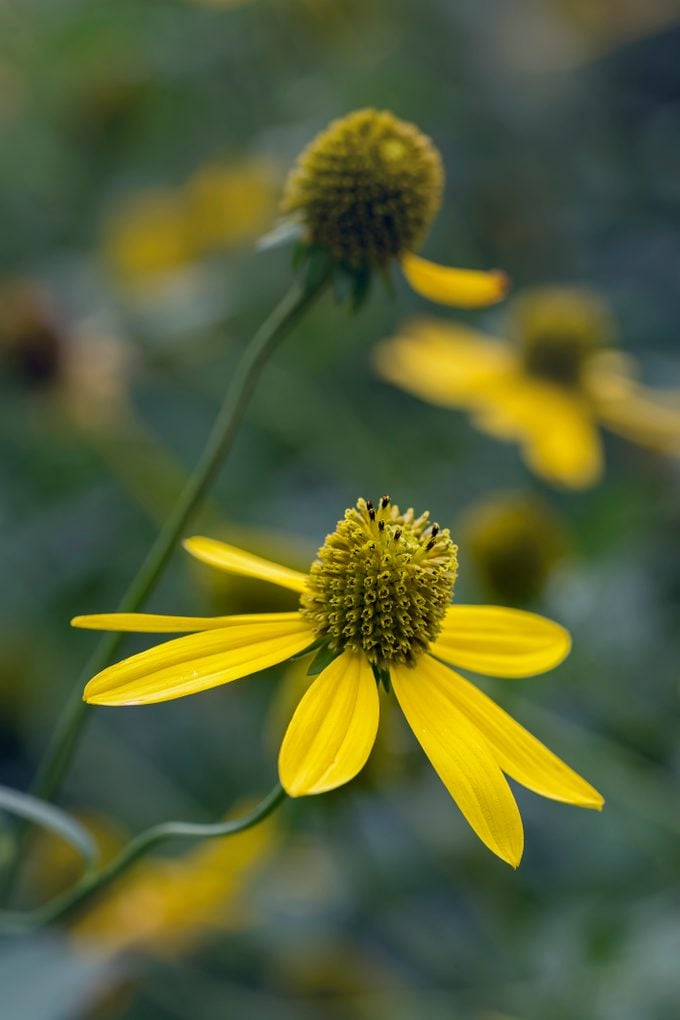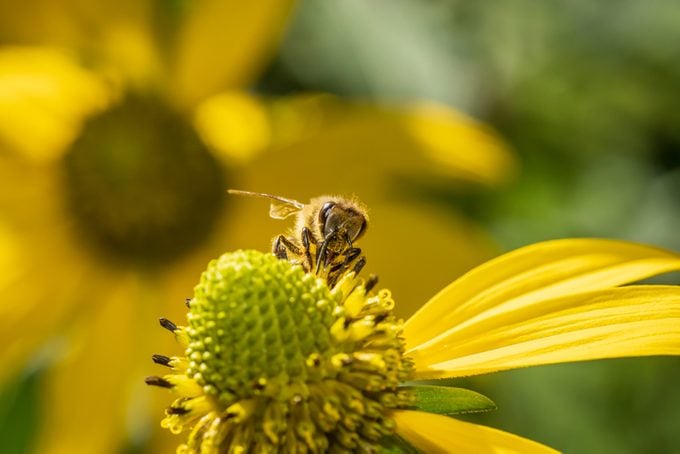Cutleaf Coneflower Care and Growing Tips
Updated: Jan. 26, 2024
Cutleaf coneflower is the ideal option for gardeners who want a low-maintenance perennial that supports backyard birds and bees all year long.

When you think of coneflowers you may think of the more common purple coneflower species but if you want an eye-catching stalks of yellow flowers, green-headed or cutleaf coneflower (Rudbeckia laciniata) is a great option. They are perfect for busy or beginner gardeners because they can handle humid summers and minimal attention, and they’re perennials, so they’ll grow back every year. Cutleaf coneflower is great for backyard birds and pollinators, too. Bees and butterflies love the nectar and birds like American goldfinches love the seeds they provide.
Are Cutleaf Coneflowers Native Plants?
Coneflowers are wildflowers native to North America, specifically the eastern and central parts of the U.S. and hardy in Zones 3 to 9. Their low-maintenance nature makes them a great flower choice for beginners, but some gardeners may find that cutleaf coneflower grows a little too well.
Although not as aggressive growers as other plant species, coneflowers still have a tendency to spread, which makes them particularly great for large garden landscapes and open spaces like prairies and meadows.
Check out more of the best coneflower plants to grow.
How Tall Will Cutleaf Coneflower Plants Grow?

Cutleaf coneflowers are quite tall and can grow as high as 9-feet-tall! (For comparison, purple coneflowers usually top out at 5 feet in height.) As a member of the Asteraceae or daisy family, their flowers have a classic daisy shape with drooping yellow petals. Coneflowers have sturdy stalks so most gardeners find they don’t need to stake them. However, if your cutleaf coneflowers are in a more shady spot or if conditions are dry, you may find them getting leggy and needing a little extra support.
Psst—birds and butterflies also love black-eyed Susan flowers.
When Should You Plant Cutleaf Coneflowers?
Spring is the best time to plant cutleaf coneflowers – just make sure it’s after the last frost. Early summer is also fine, too, because coneflowers bloom later in the season. If you want coneflower blooms in the same year that you plant them, pick up already established coneflowers from a plant nursery or garden center. Although you can start coneflowers from seed, you probably won’t see any blooms for a couple years if you do so.
Prairie coneflower thrives in hot, sunny spots.
Do Cutleaf Coneflowers Prefer Sun or Shade?
Cutleaf coneflowers are tough perennials, so they will accept most light conditions, but they prefer full sun and you’ll find they look their best if they can get four to six hours of sunlight per day. They tend to do their best in moist soil but they’ll grow just fine in average, well-drained soil, too. (In the wild, you’ll find them in moist wooded areas, such as along the banks of rivers.) And you won’t need to do much fertilizing; once a year in spring should do the trick.
Award-winning Cheyenne Spirit coneflower dazzles.
When Do Cutleaf Coneflowers Bloom?
Cutleaf coneflowers, like most coneflowers, bloom in mid to late summer and into early fall. Each plant will have as little as two and as many as 20 two to four-inch flowers with roughly a dozen yellow petals on each flower. The seed head at the center starts out a light green (another name for cutleaf coneflowers is green-headed coneflower) that matures into more of a yellow and finally a golden brown in winter.
Learn how to grow coneflowers from seeds.
Should I Deadhead Cutleaf Coneflowers?
The benefit of deadheading spent cutleaf coneflowers is that it encourages reblooming so your plant stays looking fresh. The best time to deadhead spent coneflowers is in July at the beginning of the season for an explosion of flowers and then later as fall approaches, hold off on any more deadheading so that you can save the seed heads for hungry birds in winter. Once the seed heads are mostly consumed or it’s late winter (whichever comes first), prune coneflowers down to the ground so that they’re ready to sprout up again come spring.
Enjoy colorful pictures of coneflowers in bloom.
Do These Flowers Benefit Birds and Pollinators?

Yes! Pollinators like bees and butterflies often stop by vibrant coneflowers for the nourishing nectar. In fall and into winter, cutleaf coneflowers continue to provide a source of food to birds thanks to their seed heads. Species like juncos and American goldfinch especially appreciate the seed snack in the colder months.
Learn how to manage aster yellows disease and other coneflower problems.
Do Deer and Rabbits Eat Cutleaf Coneflowers?
Coneflowers are mostly deer resistant, meaning that although deer may munch on the flowers, it seldom happens. Mature coneflowers are especially unlikely to be a deer’s lunch because deer don’t like their spiky core or smell, but young coneflowers in spring are more susceptible to being eaten.
Cutleaf coneflower is moderately resistant to rabbits, as well. But if you discover coneflower carnage in your garden, it’s more likely due to rabbits than deer. One way to protect your coneflowers is to plant things around it that hungry wildlife won’t be interested in. Try allium which has a strong scent that deer and rabbit tend to dislike.




















